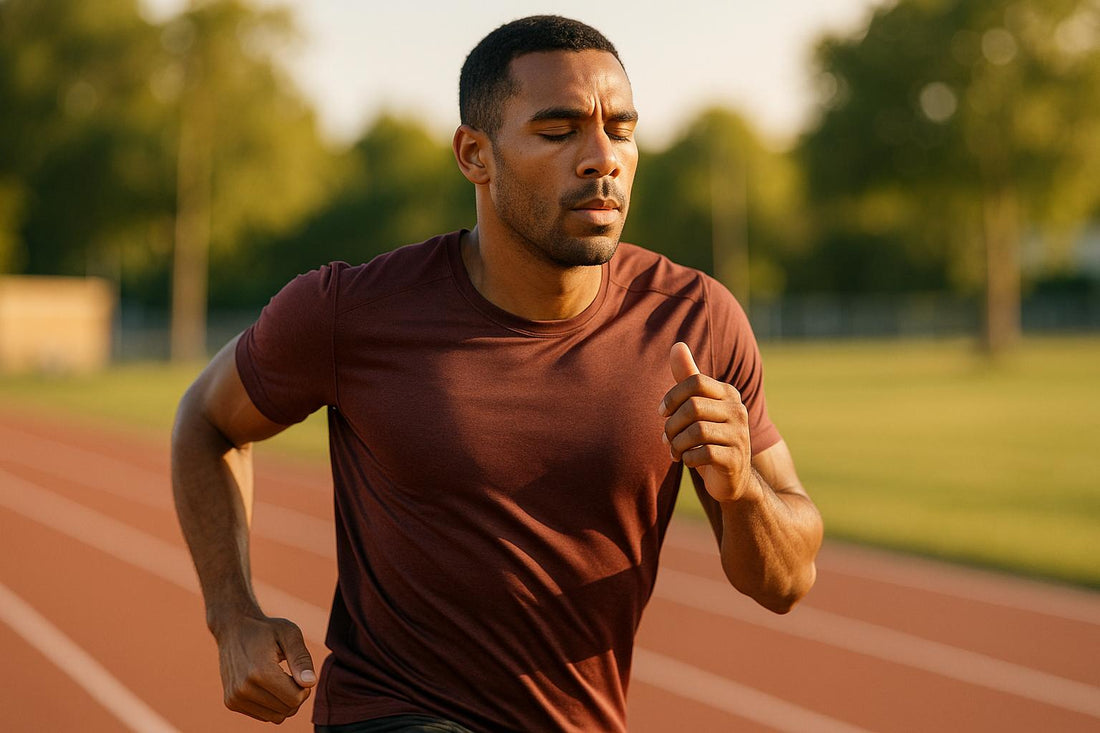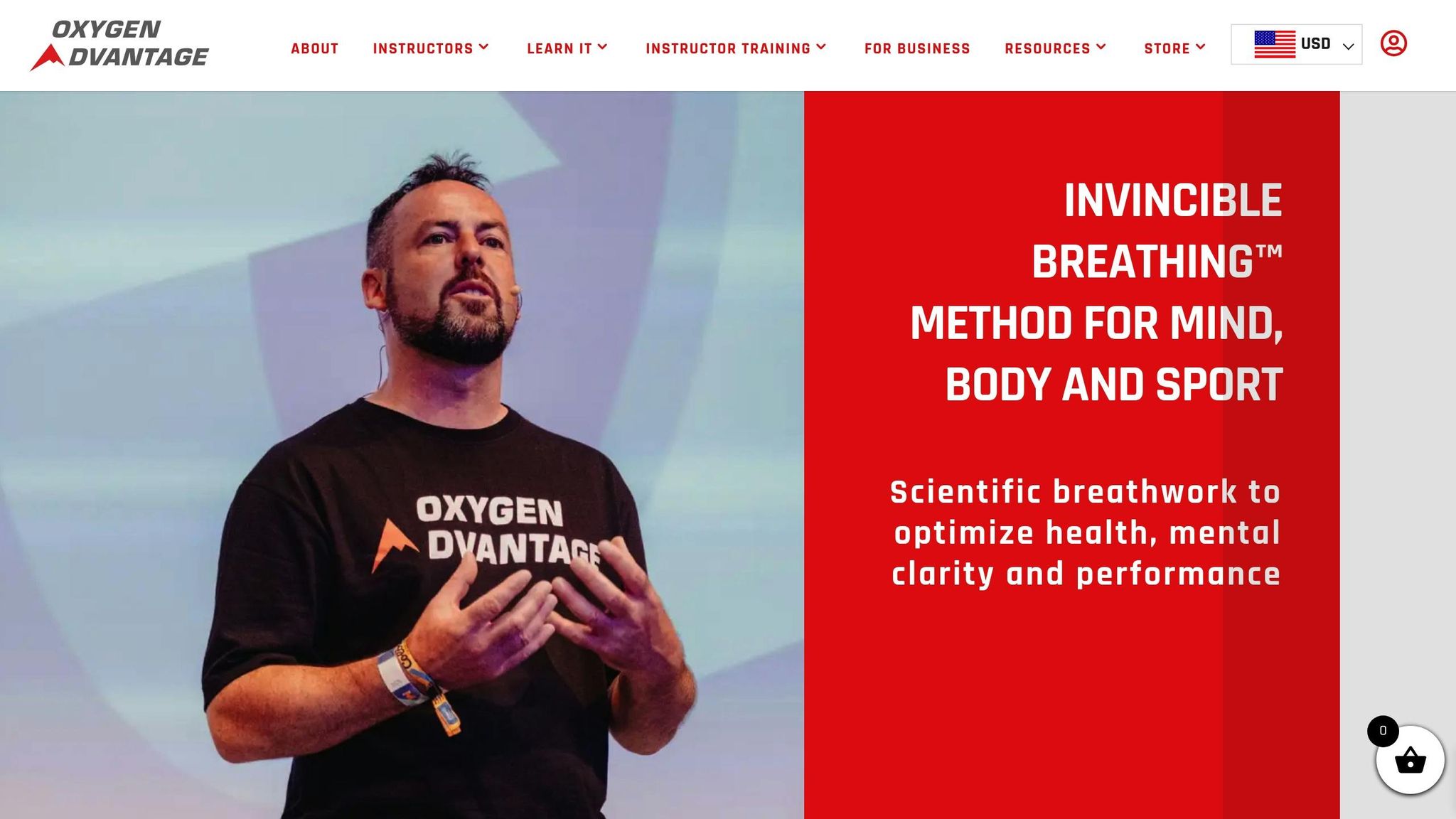
Nasal Breathing and VO2 Max: What Athletes Need to Know
Share
Nasal breathing can improve how your body uses oxygen, directly influencing VO2 max - a key measure of endurance. By breathing through your nose during exercise, you filter, warm, and humidify air while boosting oxygen delivery to muscles. This technique strengthens respiratory muscles, lowers heart rate, and enhances oxygen efficiency, helping athletes perform better and recover faster.
Key benefits include:
- Better oxygen use: Supports endurance and running economy.
- Lower heart rate: Reduces strain during moderate activity.
- Improved recovery: Faster between intense efforts.
- Higher lactate threshold: Delays fatigue during high-intensity exercise.
BWLL Nasal Strips can help maintain nasal breathing, especially in challenging Australian climates, offering better airflow for $36.00 per 30-strip pack.
Start by practising nasal breathing during light workouts and gradually increase intensity to improve performance and oxygen efficiency.
Can You NASAL (Nose) Breathe at Maximal Intensity? [VO2 MAX] | Oxygen Advantage

The Science Behind Nasal Breathing and VO2 Max
Research has shown that nasal breathing enhances how efficiently your body uses oxygen. This isn't just a theory - it’s supported by measurable improvements in performance metrics that matter to athletes.
Physical Benefits of Nasal Breathing
Nasal breathing offers several physiological advantages that improve athletic performance:
- Better oxygen efficiency: Nasal breathing increases resistance in your respiratory muscles, forcing your diaphragm to work harder. Over time, this strengthens your diaphragm, making your breathing more efficient overall.
- Lower heart rate during exercise: When exercising at moderate intensity, nasal breathing helps reduce heart rate at the same workload. This means your heart and lungs work more effectively, allowing you to sustain activity for longer without overexerting yourself.
- Improved carbon dioxide retention: By retaining more carbon dioxide, your body enhances oxygen release to muscles through the Bohr effect. For endurance athletes, this means better oxygen delivery during prolonged efforts.
- Nitric oxide production: Nasal breathing stimulates the production of nitric oxide, which helps dilate blood vessels and improve circulation. Mouth breathing skips this process, whereas nasal breathing ensures a steady supply of nitric oxide, supporting better blood flow during exercise.
- Stronger respiratory muscles: Regular nasal breathing strengthens the diaphragm and intercostal muscles, improving your respiratory endurance and making it easier to sustain intense physical activity.
These adaptations collectively contribute to improvements in VO2 max, a key measure of aerobic fitness.
Effects on VO2 Max and Performance Measures
The physical benefits of nasal breathing translate directly to better endurance and performance. Research highlights several ways nasal breathing impacts VO2 max and other critical metrics:
- Extended time to exhaustion: Athletes practising nasal breathing can sustain effort for longer at submaximal intensities. This is due to more efficient oxygen use and improved metabolic processes.
- Improved running economy: Nasal breathing reduces oxygen consumption at the same running speed, meaning you can run faster with less strain on your body.
- Lower perceived exertion: Athletes who master nasal breathing often feel that exercise requires less effort. By regulating breathing patterns, nasal breathing helps manage the nervous system’s response to physical stress, making workouts feel easier.
- Higher lactate threshold: Nasal breathing enhances the body’s ability to clear lactate, the byproduct of intense exercise. This allows you to maintain aerobic metabolism at higher intensities, delaying fatigue.
- Faster recovery between intervals: Controlled nasal breathing activates the parasympathetic nervous system more efficiently, speeding up heart rate recovery after intense efforts. This means you’re ready for the next interval sooner.
For athletes in Australia, these benefits are especially valuable when training in diverse climates. Whether it’s the humid coastal regions of Queensland or the dry heat of the Northern Territory, nasal breathing helps filter and condition the air you breathe, ensuring consistent performance across varying environmental conditions.
Training with Nasal Breathing for Athletes
Shifting to nasal breathing during exercise can improve how efficiently your body uses oxygen. Although the transition might feel challenging at first, a step-by-step approach can help you adapt and boost your overall performance.
Steps to Switch to Nasal Breathing
- Start with low-intensity activities, like walking or light jogging, where nasal breathing feels manageable. This allows your respiratory system to adjust to the added resistance of breathing solely through your nose.
- Gradually introduce nasal breathing into moderate workouts - those where you can comfortably hold a conversation. This helps ease the transition without overwhelming your system.
- Track your progress by noting how long you can maintain nasal breathing, along with your heart rate and perceived effort during these sessions.
- Make sure your nasal passages are clear before training. In Australia, where conditions range from coastal humidity to dry inland air, clearing allergens or dryness is especially important for consistent nasal breathing.
- Add specific breathing exercises to your routine. For example, practising short breath holds after exhaling can increase your tolerance to carbon dioxide, making nasal breathing feel more natural during workouts.
By taking these gradual steps, you’ll build a solid foundation for using nasal breathing in more intense training sessions.
Training Intensity and Nasal Breathing
Once you’ve adjusted to nasal breathing, you can begin tailoring your technique to different intensity levels.
- Nasal breathing is most effective during lower to moderate-intensity activities. At these levels, it supports efficient oxygen use and may even enhance fat metabolism, making it ideal for base training.
- As you approach higher intensities, like when nearing your aerobic threshold (where lactate starts to build up), maintaining nasal breathing becomes harder. However, focusing on controlled breathing during these sessions can strengthen your respiratory muscles and aid recovery.
- For high-intensity interval training, a mix of techniques works best. Mouth breathing may be necessary during intense intervals to meet oxygen demands, but switching back to nasal breathing during recovery phases can activate your parasympathetic system, helping you recover faster and stay calmer.
- The demands of your sport also play a role. Cyclists and swimmers, who often maintain a stable position, may find nasal breathing easier to sustain during intense efforts. Runners, on the other hand, might face challenges from uneven terrain.
- Don’t forget to account for local conditions. Nasal passages help cool and humidify incoming air, so if you’re training in Australia’s diverse climates, your body might need extra time to adjust. Incorporating nasal breathing into your routine over time can help you adapt to these variations.
sbb-itb-dc10090
Using BWLL Nasal Strips to Support Athletic Performance

For athletes aiming to improve their nasal breathing, BWLL Nasal Strips offer a practical way to enhance both training and competition. These strips work by reducing nasal resistance, complementing your breathing techniques to help optimise oxygen intake.
How BWLL Nasal Strips Work
BWLL Nasal Strips feature a spring-like band that gently lifts the sides of your nose, widening the nasal passages and making it easier to breathe. This simple yet effective mechanism improves airflow, helping you maintain nasal breathing even during intense physical activity.
The strips adhere securely to the outside of your nose using a strong adhesive designed to stay in place through tough workouts. Made from hypoallergenic materials, they minimise the risk of skin irritation, even during prolonged use. Since they’re drug-free, you can use them daily without worrying about side effects or dependency. This enhanced airflow is particularly helpful for Australian athletes who often contend with diverse environmental conditions.
Benefits for Australian Athletes
BWLL Nasal Strips are especially valuable for athletes navigating Australia's unique climate. From the humid coastal air in cities like Brisbane and Sydney to the dry, arid conditions of the Outback, these strips ensure your nasal passages perform efficiently, no matter where you are.
They can provide immediate relief from nasal congestion, which is a game-changer during Australia's pollen-heavy seasons or when training in dusty environments. By keeping your nasal passages open, the strips allow your nose to filter, warm, and humidify the air you breathe, protecting your lungs and maintaining the benefits of nasal breathing.
For endurance athletes training across Australia’s varied altitudes, these strips help sustain nasal breathing patterns, even when oxygen levels drop. They’re also useful for athletes who experience exercise-induced nasal congestion, which often forces a switch to mouth breathing and can hinder performance.
Another bonus? Their eco-friendly packaging aligns with the environmental values many Australian athletes hold dear. The packaging is made from recycled and biodegradable materials, making it a thoughtful choice for those who care about sustainability.
At $36.00 for a 30-strip pack (just $1.20 per session) and bulk deals like Buy 2 Get 2 Free for $72.00, these strips are an affordable addition to your training toolkit. They directly support improvements in oxygen efficiency and VO2 max, helping you get the most out of your workouts.
BWLL Nasal Strips are suitable for all levels of fitness. Whether you’re a weekend adventurer hiking in Australia’s national parks or an elite athlete competing on the global stage, these strips can enhance your performance. Wear them during any activity - cycling along the Great Ocean Road, swimming at Bondi Beach, or running through the Blue Mountains - and experience the difference they make.
Key Takeaways
Understanding how nasal breathing influences VO2 max can make a real difference in athletic performance. Your nose plays a vital role as an air filter, warming and humidifying the air you breathe, while also producing nitric oxide - a compound that improves oxygen delivery to your muscles. This process helps your body use oxygen more effectively during exercise.
Training with nasal breathing takes time and a gradual approach. Start with low-intensity workouts and slowly increase the intensity as your nasal passages adapt. This method not only strengthens your respiratory system but also preserves the benefits that come with proper breathing techniques.
Nasal breathing offers more than just improved oxygen uptake. It also supports better posture, increases diaphragm engagement, and helps regulate your heart rate during physical activity, all of which contribute to enhanced performance.
For Australian athletes facing varied environmental challenges - from coastal humidity to dusty inland conditions - keeping nasal passages clear is essential. BWLL Nasal Strips, costing just $1.20 per session, provide a practical way to ensure your nasal breathing remains effective, no matter the conditions.
Focusing on your breathing technique can elevate your overall performance. Whether you're training in the Blue Mountains or competing at sea level, refining nasal breathing can lead to better VO2 max, faster race times, improved endurance, and quicker recovery.
Consistency matters. Tools like nasal strips can help you stay on track with your training goals.
FAQs
How does breathing through your nose improve VO2 max and athletic performance?
Nasal breathing has the potential to improve VO2 max and boost athletic performance by making oxygen intake and usage more efficient. When you breathe through your nose, the air gets warmed and humidified, which reduces airway resistance. This helps maintain steadier oxygen levels during exercise, supporting better endurance and overall performance.
On top of that, nasal breathing promotes diaphragmatic breathing, which can expand lung capacity and enhance respiratory efficiency. Over time, practising this technique can help athletes optimise how their body uses oxygen, making it especially useful for endurance-focused activities. Adding nasal breathing to your training routine could be a powerful way to improve both stamina and recovery.
How can athletes effectively switch to nasal breathing during different exercise intensities?
Switching to nasal breathing during exercise takes time and should align with the intensity of your workouts. For low to moderate activities, focus on breathing deeply and steadily through your nose, engaging your diaphragm. This approach can help improve endurance and efficiency. When tackling higher-intensity exercises, begin by using nasal breathing during warm-ups or lighter portions of your workout. Gradually increase your tolerance, but remember that during very intense efforts, mouth breathing might become necessary to meet your oxygen demands.
The key is consistent practice. Incorporate nasal breathing into your training regularly to build comfort and improve performance. With time, this method can become more manageable, even during tougher sessions.
How do BWLL Nasal Strips help athletes breathe better in Australia’s diverse climates?
BWLL Nasal Strips are designed to make breathing through your nose easier by gently opening the nasal passages. This improves airflow and oxygen intake, which are essential for boosting athletic endurance and maintaining focus. Whether you're training in Australia’s humid tropics or tackling workouts in its drier inland regions, these strips are built to perform across the country’s diverse climates.
By reducing nasal resistance and congestion, BWLL Nasal Strips help you breathe consistently and efficiently. This supports both your performance during exercise and your recovery afterwards. Plus, they’re a simple, drug-free way to enhance your breathing - whether you’re pushing through a tough workout or taking time to rest.